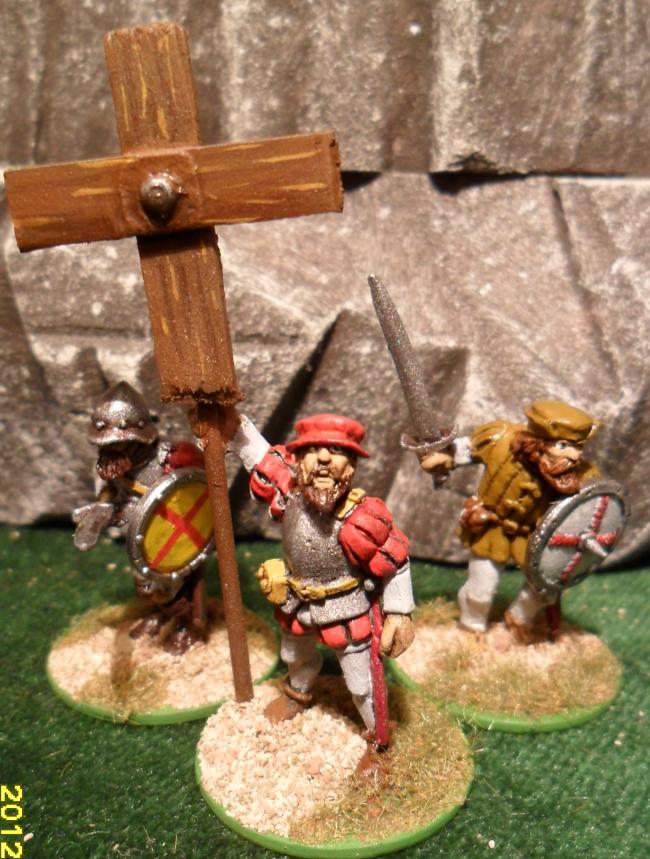I am mentoring a guy I met on Facebook, Paul-O. He is creating a campaign setting based on a historical period I find fascinating. We started talking as my experience in such things could help him deal with some of the pitfalls of doing this. Part of his latest round of question yielded experience I thought could be useful to all.
He plans on publishing his setting in the future, something I will look forward to seeing.
I scrubbed the name of the people and locations to keep his idea private.
[Paul] What makes for better storytelling: having the characters start somewhere on the [Sea], which is the trade route crossroads and at the border of the approaching destruction of the [Historical] war machine? Or, start the players inside the ruthless [Historical] empire, potentially as displaced conquered people, rebellious citizens, or loyalists on a quest?
 This is where you need to change from thinking as a GM and thinking as a setting writer.
This is where you need to change from thinking as a GM and thinking as a setting writer.
As a GM you decide what your players will do: kill the orcs, conquer the city, destroy the evil god. This is where you decide what happens. As a setting writer, you must separate yourself from those concerns.
IF D&D were a play, the setting writer paints the set and the decor. Where is this? Why here and not there? Who are the big players? The adventure writer is the director working from his own script.
Since YOU will not be at every table, the plot of things at your table and at mine will be different, but set in the same place. You may decide the [Historical] are the bad guys whereas I may decided I want the PCs to fight against the [Historical II] rebels in my city. Both plots are equally valid and the more grey/ open to interpretation to set that line, the more adventure potential you open. Monsters are bad guys and few PCs bat an eye at going and killing beasts or fiends. However, killing many other humans is something different and should be see as such.
So your [Historical] could be aggressive and militaristic with a penchant for heavy-handed tactics but their empire is crumbling from internal pressure. The [Historical II]s are on the rise but many think they are [Historical] 2.0, the [Historical III] may use dirty tactics in war and hate both, and the [Historical IV] are officially allied to the [Historical II] but sell secrets to the [Historical]. This give a GM more pieces to play with.
True the rulers of [Historical] may be evil and those of [Historical II] good, but even if the leader is of a given alignment does not make the whole country like that. One may be good but a zealot for [Historical God] and another may be evil but concerned mostly with the creation of defenses. A good-aligned leader may hire assassins to protect his people. This makes the character relatable, interesting, and complex
 There are VERY FEW historical people you can qualify as "pure good" (Jesus and the Apostles) and more as "pure evil" (Hitler and Stalin). I firmly dislike the current attitude that if someone does something bad or stupid one time, that person needs to be shunned and outcast forever. I did some stupid things as a kid and changed my ways.
There are VERY FEW historical people you can qualify as "pure good" (Jesus and the Apostles) and more as "pure evil" (Hitler and Stalin). I firmly dislike the current attitude that if someone does something bad or stupid one time, that person needs to be shunned and outcast forever. I did some stupid things as a kid and changed my ways.
A character that is pure as snow (as we now see too much on TV) or with blemishes that are meaningless are not interesting. You don't want perfect people, you want them to have inner conflict. One person hates his spouse, another is broke but no one knows about it yet, and another plans to abscond with another man's wife.
That create conflicts: within the character and in the setting. And conflict is what leads to adventure. Alignment should not be the only factor in determining what an NPC does. One of the best NPCs ever: Lancelot. By all account, a good and true knight. When given the opportunity, he slept with his king and best friend's wife.
So I ask you, does "Lawful Good" tell you everything about Lancelot?

No comments:
Post a Comment